Gochujang Noodles are so full of flavor, you won’t be able to stop eating them. Imagine chewy noodles bathed in a rich and creamy, spicy, savory sauce studded with tender greens and meaty sliced mushrooms. They’re quick and easy to make, too, and can be ready in under 20 minutes.

This post may contain affiliate links. As an Amazon Associate, I earn from qualifying purchases. See my Affiliate Disclosure.
This quick Gochujang Pasta recipe is great with any type of wheat noodle — udon, ramen, yakisoba noodles, or even Italian-style pasta like bucatini or, one of my favorites, fusilli corti bucati. Or try it with gluten-free rice noodles.
Why You’ll Love This Gochujang Noodles Recipe
This gochujang pasta is a real winner. I just know you’re going to love this recipe and here are a few reasons why:
- It’s delicious — with a sauce that is rich, creamy, complex, and spicy, it’s one of the most delicious noodle dishes you’ll ever eat.
- It’s quick to make — it can be ready in 20 minutes or less.
- It’s versatile — this version includes sauteed greens and meaty mushrooms, but you can add whatever vegetables you like.
- It’s customizable — make it meaty, or vegetarian. Add proteins like chicken, pork, beef, shrimp, tofu, or eggs. Make it vegan by using non-dairy cream, like coconut cream, and leaving out the cheese. You can even make it gluten free by using gluten-free soy sauce and rice noodles.
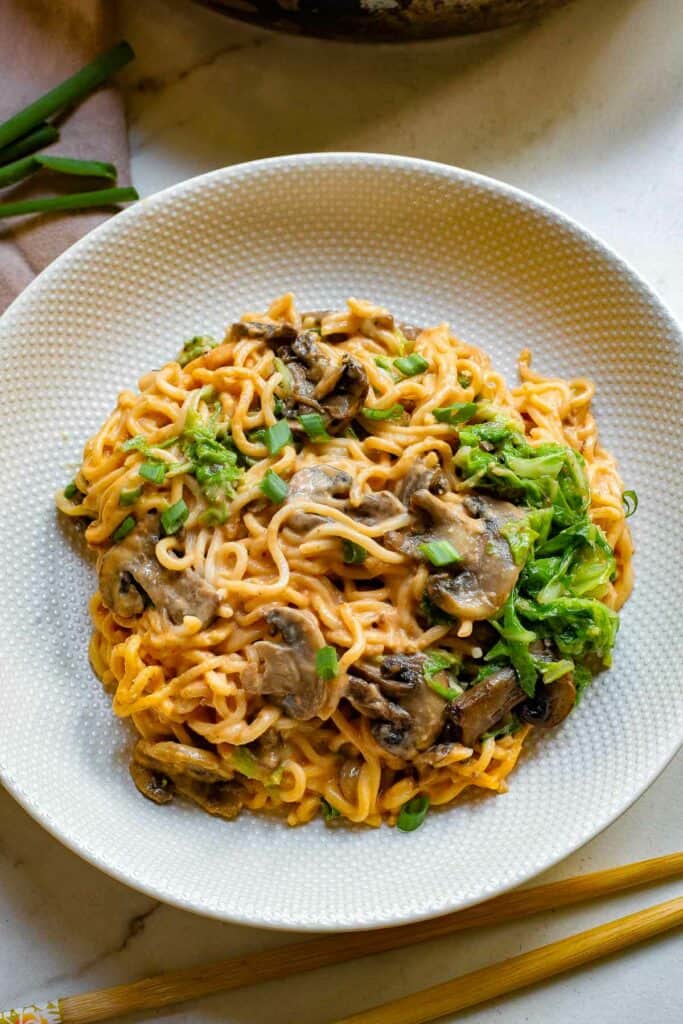
What Is Gochujang?
Gochujang is a fermented red chili paste that is a staple in Korean cooking. To make it, the producers combine chili peppers, like gochugaru peppers, glutinous rice, fermented soybeans, and salt. This mixture ferments over weeks, months, or even years to develop its intense flavor — savory, a little sweet, and spicy. Because it is fermented, it is loaded with umami.
You can buy gochujang in your local Asian market or Korean market and in many supermarkets, or buy gochujang online. Look for gochujang paste, as opposed to sauce that has other flavors added, which is sold in plastic tubs.
You’ll find that the spice level varies widely from brand to brand, and some brands make mild, medium, and spicy versions of their gochujang. As with any spicy ingredient, start with a little and add more as desired.
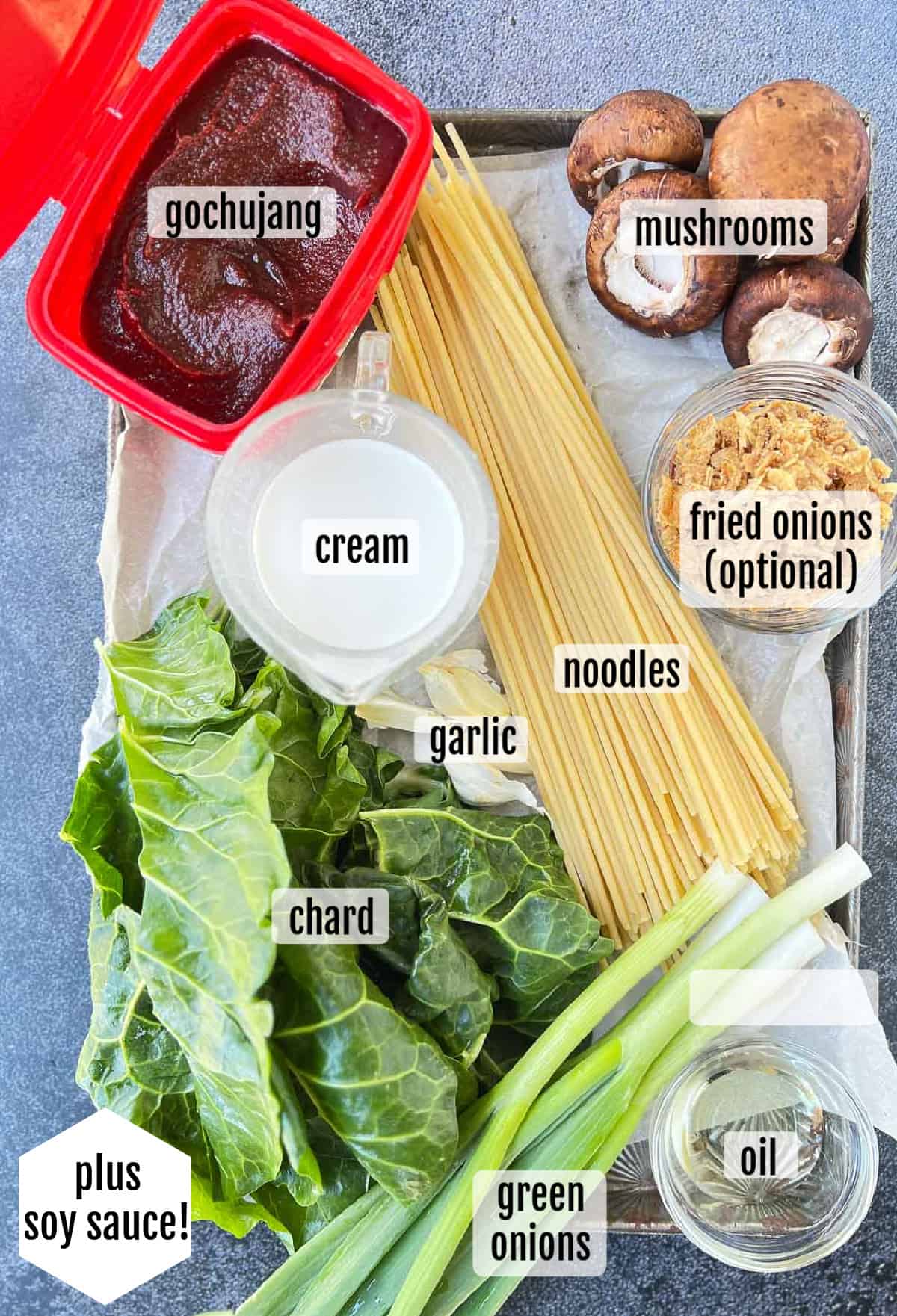
Ingredients You Need
For the complete list of ingredients with quantities and detailed prep and cooking instructions, please see the recipe card that appears at the end of this post.
Aside from the gochujang, the ingredients for this dish are super basic and versatile. Here’s what you need:
- Noodles: You can use any type of wheat noodles for this recipe. I like to use Asian noodles like udon noodles, ramen noodles (not the instant kind), yakisoba noodles, or Chinese wheat noodles. Or you can use Italian-style spaghetti, bucatini, or rotini. If you want to make the dish gluten-free, use a wide rice noodle, like chow fun or pad thai noodles. You could even use zucchini noodles, or zoodles, if you want a low-carb version.
- Oil: You can use any neutral-flavored cooking oil like canola oil, safflower oil, or vegetable oil.
- Chard: Sauteed greens provide textural contrast and added nutrition. I use green chard, but red or rainbow chard works, too. You can also substitute kale or another dark, leafy green.
- Mushrooms: Sauteed mushrooms have a meaty quality that works with with the slithery noodles. I use cremini mushrooms, but you can use any mushrooms you like.
- Garlic: For the best flavor, use fresh garlic and mince it finely.
- Gochujang: You can buy gochujang in Asian markets (especially Korean markets), many supermarkets, or online. Look for one that has natural sweeteners. I like Jongga Vision, Sempio, or CJ Haechandle brands. You can adjust the amount of gochujang depending on your personal taste and how spicy the brand is.
- Cream: I use heavy cream, but you can use light cream or half-and-half. If you want a dairy-free version, substitute coconut cream or a combination of coconut cream and coconut milk.
- Soy sauce: Just a little soy sauce adds additional umami and saltiness.
- Parmesan cheese: This helps the sauce cling to the noodles and also adds even more umami.
- Optional garnishes: You can garnish your gochujang noodles with your favorite toppings. I like fried onions, fried shallots, sliced green onions, julienned basil, or crumbled bacon. You could also add a drizzle of sesame oil or a sprinkling of toasted sesame seeds.
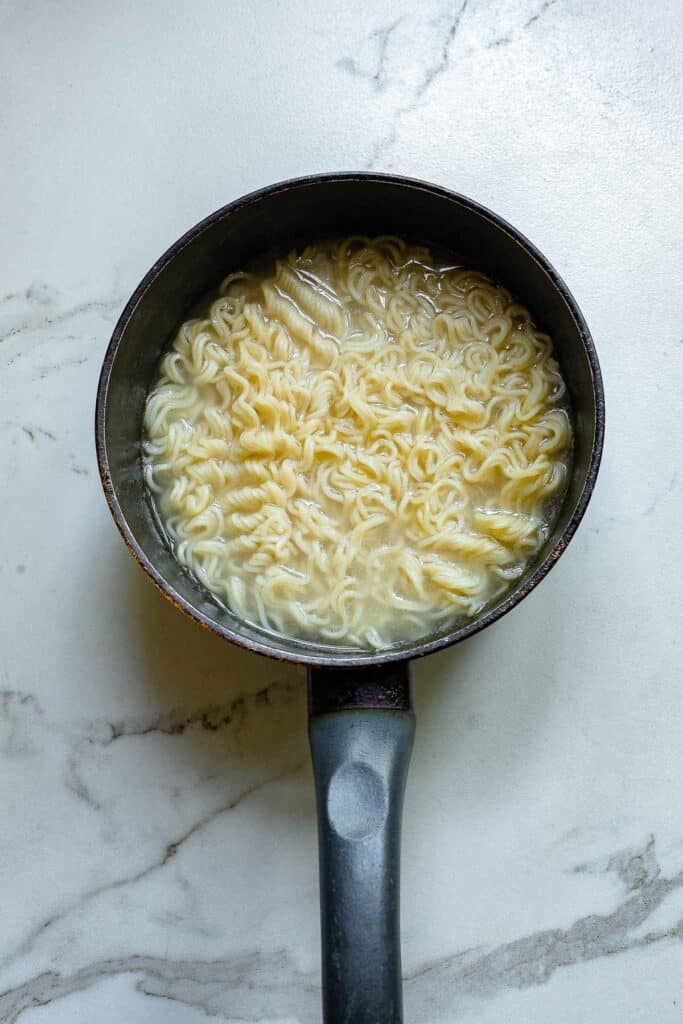
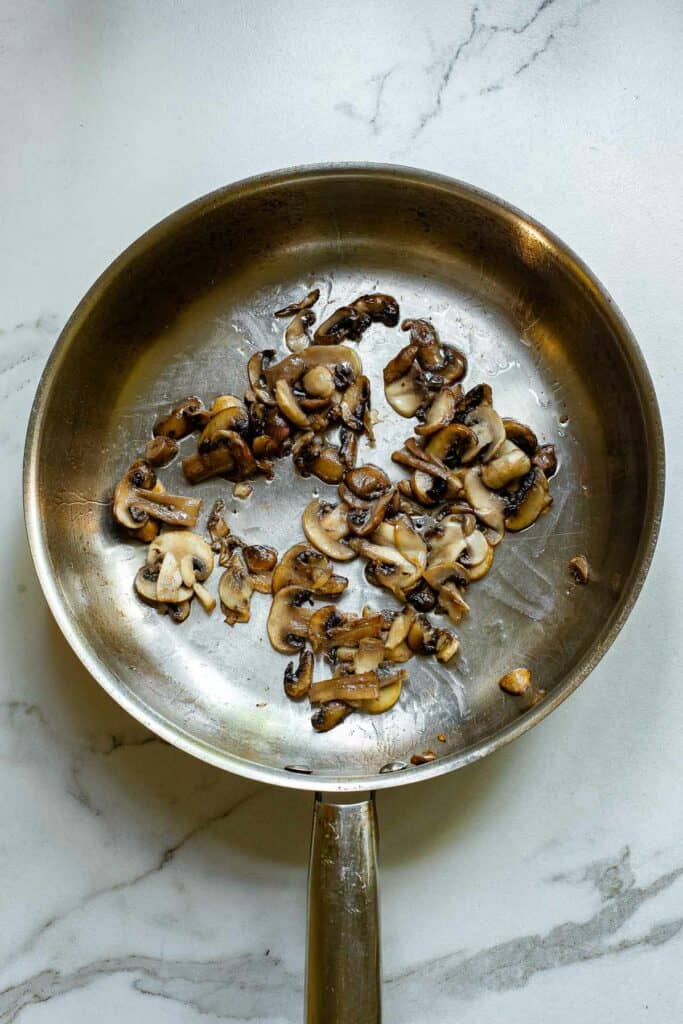
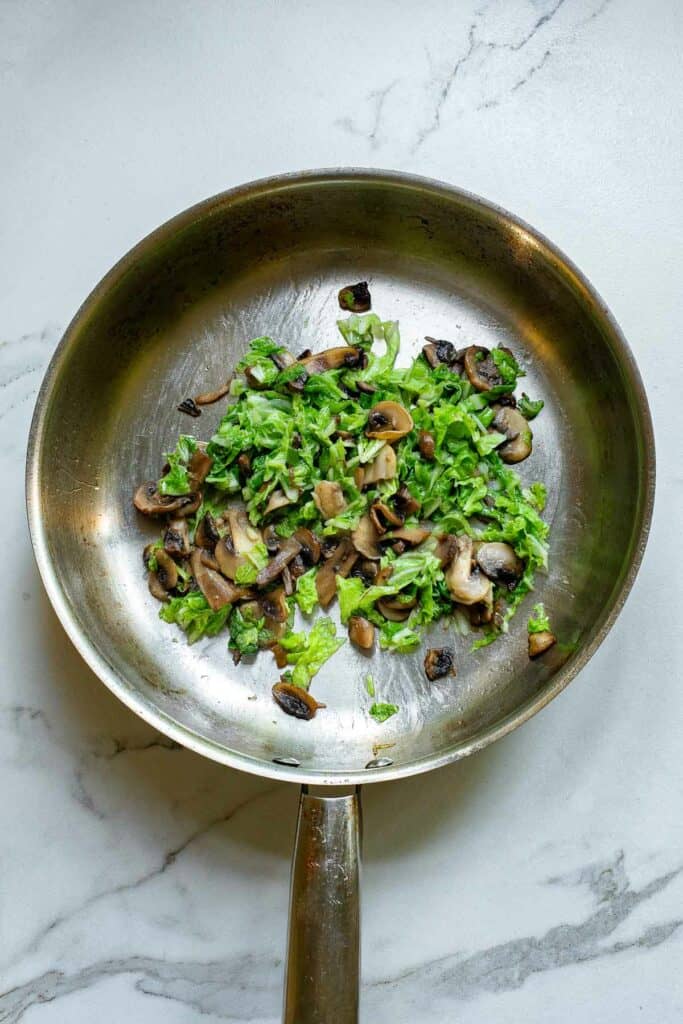
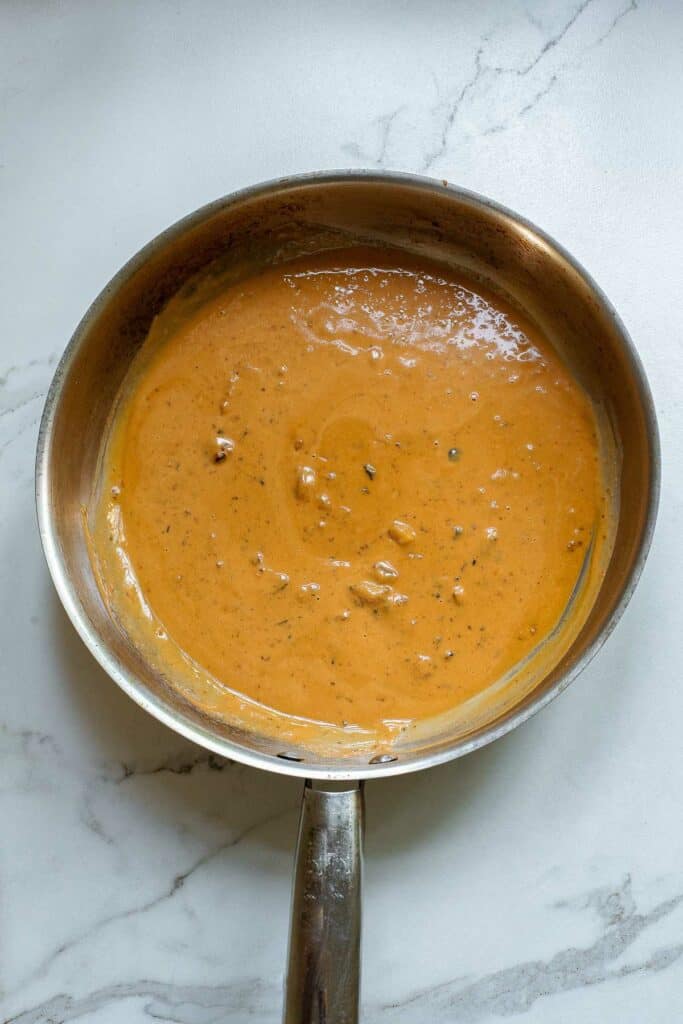
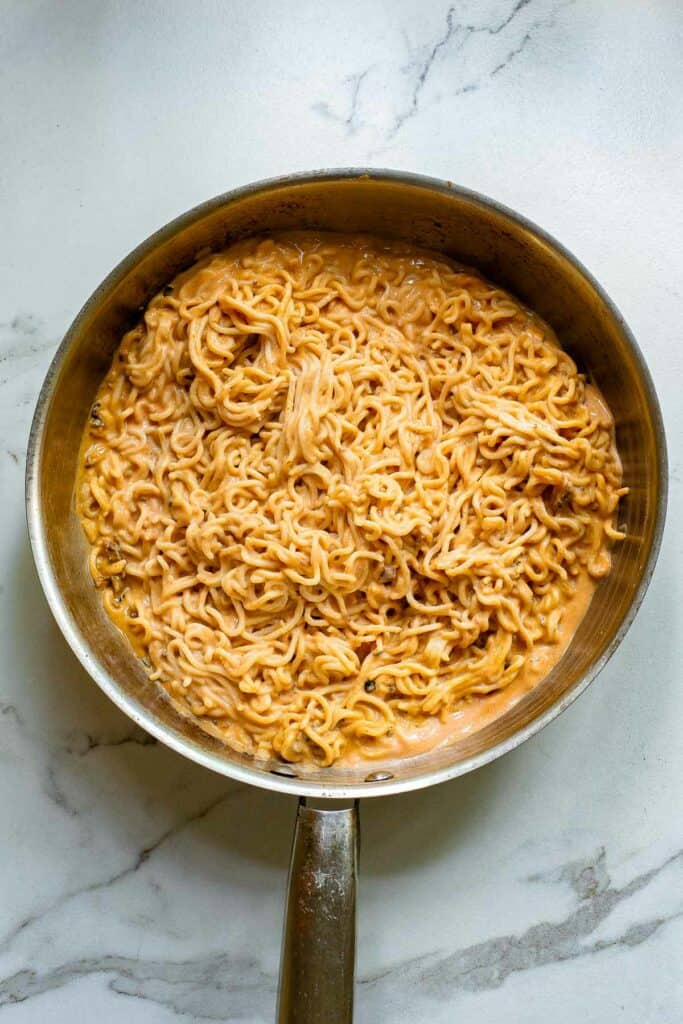
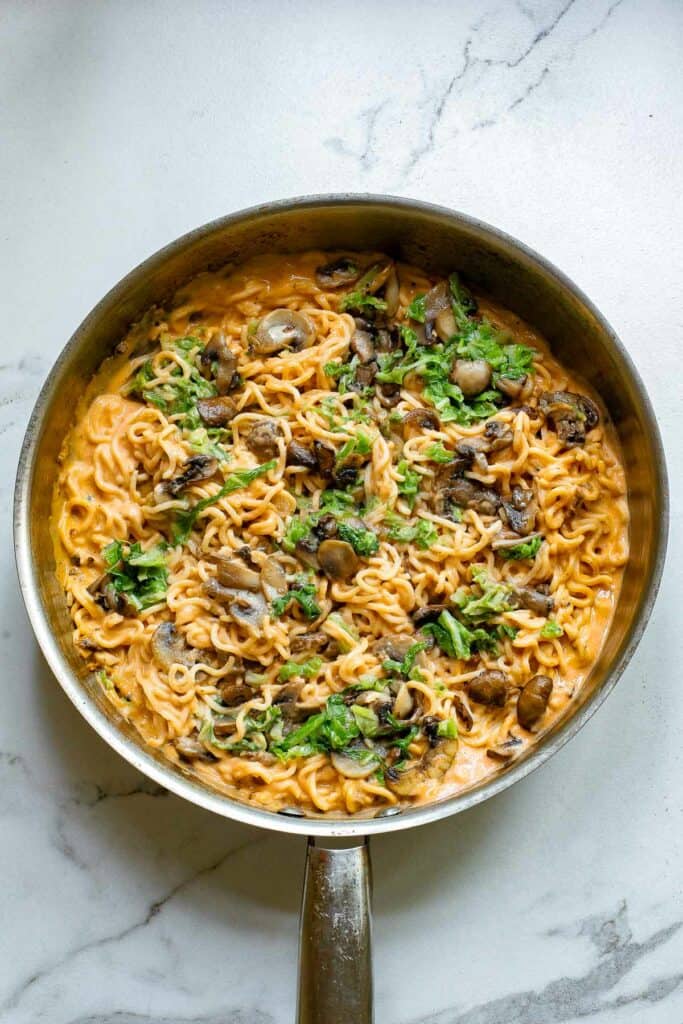
How To Make It
For the complete list of ingredients with quantities and detailed prep and cooking instructions, please see the recipe card that appears at the end of this post.
This flavorful noodle dish is so easy to make. Here’s how:
- Cook the noodles al dente in salted water. Save about a cup of the cooking water to use in the sauce to get the right consistency.
- Saute the mushrooms and chard and then set aside.
- To make the gochujang sauce, cook the garlic briefly and then add the gochujang and cook to caramelize it a bit, just a minute or so. Then add the cream and soy sauce and whisk it all together. At first the gochujang will be clumpy, but keep whisking and the sauce will come together. Simmer for a couple of minutes to thicken.
- Add the cooked noodles along with a splash of the reserved noodle cooking water to loosen the sauce a bit. Add the sauteed vegetables, too. Toss to coat everything well in the sauce, adding a bit more of the noodle-cooking water if necessary. You want it to be saucy but thick enough that the sauce sticks to the noodles. Add the Parmesan cheese and toss to combine.
- Serve immediately, garnished with green onions, fried onions, crumbled bacon, or any other garnishes, as well as additional Parmesan cheese.
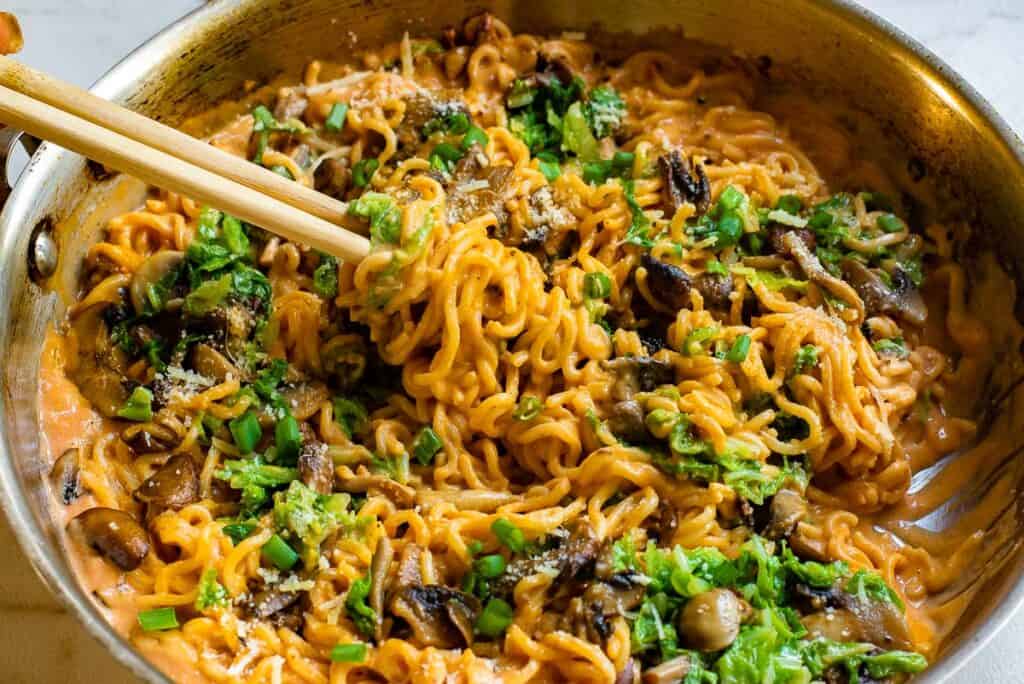
What To Serve With It
Add some protein to the noodles and this makes a great one-pan meal. I love to serve a crisp Japanese Cucumber Salad (Sunomono) or Pickled Daikon as a refreshing counterpoint to the spicy gochujang sauce. Or serve Cucumber Kimchi or Stir-Fried Lotus Root.
Serve Salt and Pepper Chicken, Mochiko Chicken, or Chicken Karaage alongside, if you like, or Beef Bulgogi.
If you’re tired of noodles, why not try this Air Fryer Gnocchi instead?
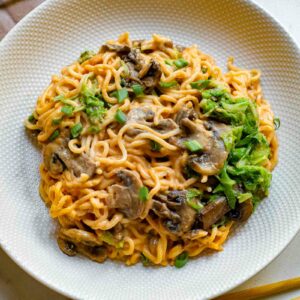
Gochujang Noodles
Ingredients
- 8 ounces dry noodles or the equivalent of 4 servings of fresh noodles
- 2 tablespoons oil divided
- 4 ounces cremini mushrooms sliced
- Pinch of kosher salt
- 1 bunch Swiss chard center ribs removed and leaves cut into ribbons
- 4 garlic cloves
- ¼ cup plus 1 tablespoon gochujang less?
- ½ cup heavy cream
- 1 tablespoon soy sauce
- ½ cup freshly grated Parmesan cheese plus additional for serving
Instructions
- Cook the noodles al dente in salted water, according to package directions. Drain, reserving 1 cup of the noodle cooking water.
- In a large skillet, heat 1 tablespoon of the oil over medium-high heat. Add the mushrooms and salt and cook, stirring occasionally, until they soften and begin to brown. Add the chard and cook, stirring, until wilted, about 2 minutes more. Transfer the vegetables to a bowl or plate.
- Add the remaining tablespoon of oil to the skillet and then add the garlic. Cook, stirring, for about 30 seconds. Add the gochujang and cook, stirring, for about 1 minute.
- Stir in the cream and soy sauce and simmer until the mixture thickens a bit, 2 to 3 minutes. Add a splash of the reserved noodle cooking water to loosen the sauce a bit.
- Add the drained pasta to the skillet and cook, tossing the noodles with tongs, Cok for about 2 more minutes, adding additional reserved pasta cooking water, a little at a time, to ensure the sauce coats the noodles well. Toss in the reserved chard and mushrooms and then stir in the Parmesan cheese.
- Serve immediately, garnished with green onions, fried onions, crumbled bacon, or any other garnishes, as well as additional Parmesan cheese.


